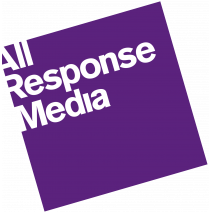Clear, concise content. It’s crucial to your website’s performance. It helps broaden your audience and can improve engagement across the site. Yet, this key rule is often lost in the shuffle of content management.
When it comes to getting your message across, it’s tempting to be as thorough as possible. But those lengthy sentences and countless paragraphs could be doing more harm than good. That’s because online readers have limited attention spans.
Research by Chartbeat found that the majority of site visitors only scroll through around 50% of an article. In fact, a Nielson study on eye-tracking found that less than 20% of content on web pages is actually read. That means most people will have stopped reading this article by now.
How can readable content help?
Making your content scannable makes a huge difference. It stops walls of text being stumbling blocks for your visitors and helps guide them on their journey across your site. It’s not only the readers who benefit though. Ensuring your content is readable can improve your overall site performance and help you meet your goals.
Usability
Whether your site focuses on athletic shoes or academic studies, consider the nation’s average reading age. In the UK, government advice for content is to write for a nine-year-old’s reading age. By the age of nine, children stop reading individual words and instead simply recognise their shape. This means they will skip words and bounce around the page. And this sticks with us as adults.
Keeping words short, sentences brief, and paragraphs digestible, shapes your content to these reading habits. A study by Nielsen found this concise content approach led to a 124% improvement in site usability. So, don’t be afraid to edit, edit, edit.
Accessibility
Complex content can be more challenging for some visitors. Those with learning disabilities or visual issues could feel alienated by complex text. When writing your content, keep this audience in mind. Stick to Web Content Accessibility Guidelines by writing as clearly as possible and in plain language. Even if you’re tackling a complex topic, try to communicate it as plainly as possible.
Ranking
While Google and Bing don’t focus too much on readability, it does contribute to your site’s ranking. After all, if you clicked on a link and were met by a huge amount of text, you’d probably leave quickly. Readable, well-structured content can help improve engagement and lower bounce rate. These are metrics that search engines do potentially pay attention to, so they can result in increased visibility.
Conversions
Usability, accessibility, and visibility are important goals. But you’re ultimately looking to increase conversions. Clear content is just another tool for achieving this. Use the text on your site to communicate your message and guide readers to conversion points.
All Response Media viewpoint
The way we engage with content may have changed in the modern age, but the rules of good writing haven’t. If you want to get your message over as clearly and effectively as possible, just stick to George Orwell’s advice:
- Never use a long word where a short one will do.
- If it’s possible to cut a word out, always cut it out.
- Never use a foreign phrase, scientific word or jargon if you can think of an everyday English equivalent.
It’s that simple.
Read more information on our digital services.

